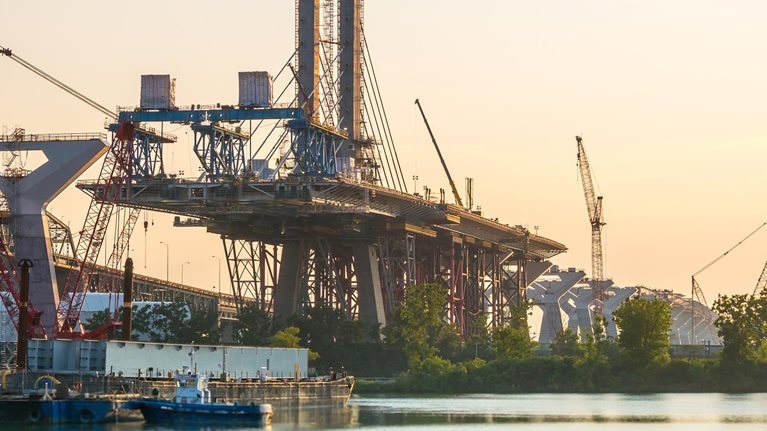The COVID-19 pandemic will have an enormous impact on people’s lives and livelihoods—that much is clear. The path to recovery is far less so, though it is evident that the crisis has significantly impeded many organizations’ ability to execute capital projects, and may continue to do so for some time.
The availability of labor and materials has decreased worldwide, while more and more balance sheets and cashflows are becoming capital-distressed. Physical distancing and travel restrictions have made it difficult for sectors and countries to get workers safely into plants and construction sites, and vital supplies into global production networks. Government-enforced public-health measures, for example, have disrupted the operations of fabrication yards and construction sites across Asia and Europe.
Freeing up cash by deferring capital expenditures is one of the fastest and most substantial ways to mitigate these ill effects (Exhibit 1). As such, companies across sectors and the globe have announced capital-expenditure cuts ranging from 10 to 80 percent (Exhibit 2). To gain insight on the extent to which specific industries have been affected, we analyzed publicly available notices from some of the largest companies in the world: 98 had announced capital reductions. Although many have announced top-line cuts to capital budgets, however, finance leaders often don’t know which projects to cut or where best to reallocate their capital.


As the pandemic-fueled crisis has illustrated, CFOs and company leaders will need to quickly reset their capital-project portfolios. To do so, companies should follow a four-step process: triaging their portfolio, prioritizing options, optimizing individual projects, and finalizing the portfolio plan. This approach sets up a blueprint for companies for long-term, effective portfolio optimization in the next normal.
Would you like to learn more about our Capital Projects & Infrastructure Practice?
A reset is difficult but worth the effort
In our experience, successfully executing this approach not only maintains delivery of business objectives and results—they also reduce capital spending by 15 to 30 percent, and boost ROIC by 2 to 4 percent. Furthermore, our analysis shows that the reward will likely be worth the effort. In studying 1,500 companies based in the United States over a 20-year period, our colleagues found that those that dynamically reallocated their capital outperformed those that did not—their median compound annual growth rate for total shareholder returns was 10 percent, compared with 6 percent for companies that did not. This evidence suggests that companies’ response to this crisis is critical for not just short-term liquidity but also long-term success once the coronavirus crisis has passed.
Attaining these results is more easily said than done, however. Crisis situations require leaders to be well-equipped with facts to act quickly. Given the uncertainty surrounding the pandemic, however, fact-finding and knowing how much is necessary to cut to sufficiently improve cash flow can be difficult. Indeed, our April 2020 survey of 43 capital-projects leaders found that determining how deep to cut and a lacking fact base were their biggest challenges (Exhibit 3).

Regardless of whether business has grown, slowed, experienced closures, or prepared for a return to something approaching normalcy, all companies and their capital projects are undoubtedly affected by the COVID-19 crisis. Understanding the implications of the crisis and recovery on 2020 and 2021 project portfolios is critical. Until now, most leaders have been focused on the immediate response to the crisis, and many have been forced to make rapid cuts early. But as the crisis effects linger, CFOs and capital project leaders would be wise to revisit and refine their capital portfolios.
A better approach to resetting a capital portfolio
Once an enterprise has determined the level of capital expenditure it can afford, we recommend four steps toward a fast reset of its capital portfolio.
1. Triage the capital portfolio
The first step is to rapidly assess where to reduce or defer capital spending while minimizing liabilities. In some cases, physical threats to continued project execution, such as restricted site access, may cause more harm than financial ones do. In March 2020 for example, facing the rapid spread of COVID-19, many North American operators with strong finances closed sites to contractors and sent nonessential personnel home because of health and safety concerns.
Some existing projects may no longer be viable in the current environment. Work restrictions affecting suppliers and contractors, limited availability of materials and equipment, and changing market conditions could all eliminate a project’s need or ability to execute. In addition to assessing the existing portfolio, capital project leaders must also identify the largest potential opportunities for projects that have not started or are not essential to core operations.
2. Assess each project and prioritize
The second step begins with analyzing each project to develop a fact base to support informed decision making. These facts might include, for example, spending to date, committed spending, stoppage costs, as well as a measurement of expected benefits, stakeholder impact, and risk trade-offs.
Criteria used for this type of assessment differs by industry. Chemicals companies typically assess a project’s production impact—for example, if a project is not completed, is it likely to result in a shutdown? Upstream oil and gas operators consider several criteria, such as lease obligations, the cost of supply, and the cost of development, to make decisions regarding which reservoirs to drill or let expire. And utilities might measure specific risks to assess each project; for example, utilities in California would prioritize completing wildfire-prevention work before the start of the summer fire season, and these important, risk-mitigating projects must continue.
In our experience, utilities that focus on projects that add the most value—that is, using a risk-adjusted economic metric to replace or sustain projects rather than performing maintenance on a calendar schedule—can reduce their capital spending by 20 to 35 percent.

The next normal in construction: How disruption is reshaping the world’s largest ecosystem
3. Optimize selected projects
Once the priority projects are clear, the third step involves maximizing each one’s value by refining its business case and scope, enhancing design, striving toward contracting excellence, and improving construction execution.
For projects that continue, this step provides an additional opportunity to save on capital expenditure by pressure testing a minimum technical solution and identifying market opportunities. As such, companies should select the largest and most complex projects to upgrade, moving onto additional projects if time permits.
One North American chemicals company that was able to improve its sustained projects negotiated significant reductions in its engineering and construction contracts and other portions of the scope. In total, the savings on capital spending for those projects were nearly 25 percent.
4. Reset the portfolio
Finally, operators need to combine what they’ve learned in the first three steps to create a robust trade-off analysis. Portfolio decisions must be finalized—changes implemented across the organization. A reinforcing fact base will help not only make adjustments in the near term but also adapt to changing conditions over time. In addition, principles applied during a rapid resetting may also yield substantial benefits when applied to existing capital-planning processes that may affect future allocation cycles.
CFOs and other business leaders often have capital decision-making processes already in place, but working in crisis mode introduces new urgency and competing priorities for their time. It is therefore crucial for leaders to have an impartial foundation and forum to inform debiased decision making.
Rapidly setting their capital portfolio will allow companies to quickly free up capital spending according to their needs; various scenarios will prescribe which projects should be cut, reduced, optimized, deferred, or continued as planned. Using this four-step approach, one North American real-estate developer achieved a cost reduction of more than 60 percent by standardizing a set of priorities across investments for the most critical asset needs. Furthermore, the optimized investment portfolio that resulted still met program requirements and constraints—including, for example, acceptable living standards.
As operators get to work on resetting their capital portfolios, they should keep a few things in mind. First and foremost, they should implement a more-nimble process for capital allocation: companies will need to respond to the rapidly changing environment and focus more on projects that are “shovel worthy” rather than “shovel ready.” This requires investors to be strategic as they watch the world unfold—to save worthy projects that are affected by the crisis and weed out projects that were on shaky ground from the start.
One head of a Canadian public-infrastructure agency described his approach to prioritizing projects by thinking about different time horizons in parallel: keeping immediate assets and projects running while also considering the long term. The organization isolated a few indicators deemed important for recovery and manages its pipeline based on those elements. It is also working closely with its government partners to set a new post-coronavirus baseline for infrastructure priorities—in which sustainability in all forms will play a significant role.
In service of nimbler capital allocation, operators must also consider these realities:
- Having the right fact base is crucial. Difficult trade-off portfolio decisions will rely on foundational information to minimize impact or risk to the company.
- Investing in new types of capital is imperative. Reallocate capital to new areas of investment or growth (such as operational improvements in the next normal, including digital efforts).
- Speed matters, and portfolio choices will have a lasting impact. Companies will need to react quickly and competently to stabilize cashflows while balancing effects on future growth and operations.
- Collaboration is more critical than ever. Conditions are progressing more rapidly and in ways we haven’t experienced. Operators, stakeholders, and suppliers will therefore need to think differently about partnerships going forward.
Uncertainty surrounding the pandemic and economic recovery will persist. It will become increasingly important for operators to rapidly reprioritize their capital portfolios. Doing so will operationally and financially benefit both them and—once they can continue their projects—the broader economy.


